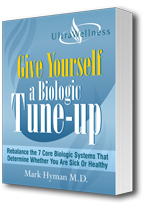Polycystic Ovarian Syndrome (PCOS) is a common condition among women in the developed world, and affects between 5 and 10% of that population, regardless of race or ethnicity1. Also known as Stein-Leventhal Syndrome (Hunton, 2007), this condition has a range of symptoms but they aren’t always expressed in every affected individual.
Polycystic ovaries are the result of anovulation (either the ovary is not expelled during menses, or menses does not occur at all). The ovaries are not releasing eggs properly, which causes an arrangement of cysts just under the surface of the ovary (Hunton, 2007). Although an ultrasound might reveal this condition, it is not always visible using this method.
Polycystic Ovarian Syndrome is not just a Sexual and Reproductive health...
The cause is somewhat up for debate. While some studies have shown that there is a genetic component, and that certain manifestations of the syndrome are more present in certain ethnic groups, there has not yet been a gene or group of genes identified that cause PCOS.
There are also behavioral factors that can contribute to the development of PCOS, which overlap with causes for Metabolic Syndrome, or Syndrome X. These behaviors include sedentary lifestyle, over-consumption of refined sugar and "bad" fat (trans fats and refined oils stripped of any nutritional value), along with high stress levels. Check out the PCOS treatments section to see possible dietary changes that can be made and will likely help.
Additionally, the anti-seizure medicine valporate (brand name: Depakote)...
Not all of the symptoms listed below must be present for a diagnosis of polycystic ovarian syndrome.
The most common features are irregular menses that ultimately result in infertility or difficulty in conception, hyperandrogenism, and polycystic ovaries. The types of irregular menses are:
- oligomenorrhea
- amenorrhea
- extremely heavy flow (sometimes causing anemia)
The expression of hyperandrogenism may include any of the following:
- hirsutism (male-patterned body and facial hair development)
- deepened voice
- adult acne
- seborrhea (comedones, either closed “whiteheads,” or open “blackheads.”
- acanthosis nigricans ("velvety, raised, pigmented skin changes, most often seen on the back of the neck, axillae and beneath the breasts." (C.A.R.S.)) *...
The presence of cysts in the ovaries cannot be the only diagnosing factor, as someone women without the syndrome might also have cysts. According to the criteria set at the 2003 Rotterdam Polycystic Ovarian Syndrome consensus workshop, only two of the main symptoms must be present for diagnosis (Hudson, 2008).
Click Here to See All 15 Treatments for Polycystic Ovarian Syndrome
FoundHealth has 15 treatments for Polycystic Ovarian Syndrome!
See all Polycystic Ovarian Syndrome Treatment
options and start building your care plan today.

